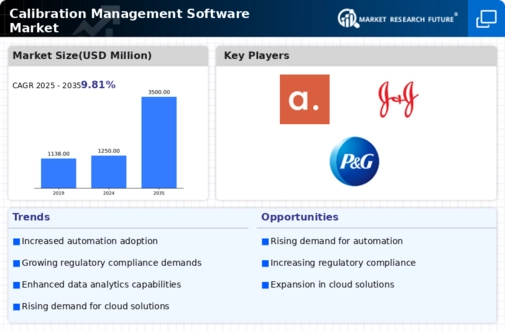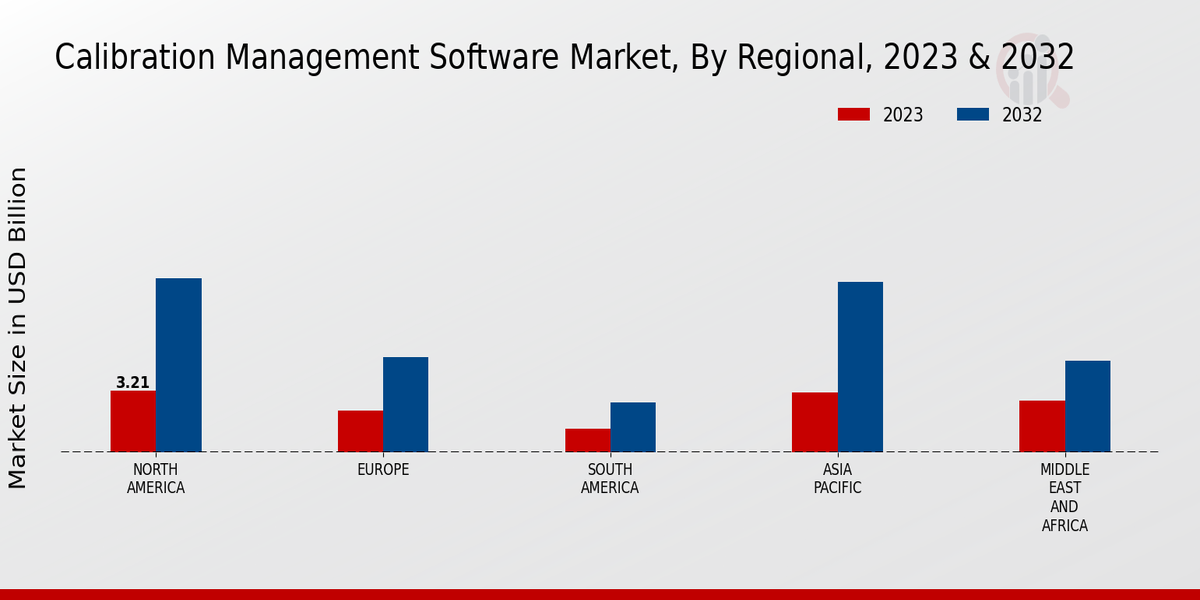Market Growth Chart
Growing Focus on Quality Assurance
The Global Calibration Management Software Market Industry is propelled by an increasing focus on quality assurance across various industries. Companies are prioritizing quality management systems to enhance product reliability and customer satisfaction. Calibration management software plays a crucial role in ensuring that measurement instruments are accurate and reliable, thereby supporting quality assurance initiatives. This trend is particularly pronounced in sectors such as food and beverage, where product safety is critical. As organizations strive to meet consumer expectations and regulatory standards, the demand for effective calibration management solutions is expected to rise, further driving market growth.
Rising Demand for Automation and Efficiency
The Global Calibration Management Software Market Industry is witnessing a surge in demand for automation and efficiency in calibration processes. Organizations are increasingly recognizing the benefits of automating calibration management, which minimizes human error and enhances accuracy. By integrating calibration management software, companies can optimize their workflows, reduce downtime, and improve overall productivity. This trend is particularly evident in sectors such as manufacturing and healthcare, where precision is paramount. The market is projected to reach 1250 USD Million in 2024, reflecting the growing inclination towards automated solutions that facilitate efficient calibration management.
Expansion of the Global Manufacturing Sector
The Global Calibration Management Software Market Industry benefits from the expansion of the global manufacturing sector, which is characterized by a growing need for precise measurement and calibration. As manufacturing processes become more complex, the demand for reliable calibration management solutions increases. This trend is evident in regions experiencing industrial growth, where companies seek to enhance their operational efficiency and product quality. The market's compound annual growth rate (CAGR) is projected at 9.81% from 2025 to 2035, reflecting the increasing reliance on calibration management software to support manufacturing excellence.
Increasing Regulatory Compliance Requirements
The Global Calibration Management Software Market Industry is experiencing growth driven by stringent regulatory compliance requirements across various sectors. Industries such as pharmaceuticals, aerospace, and manufacturing are mandated to adhere to precise calibration standards to ensure product quality and safety. As regulations evolve, organizations are compelled to implement robust calibration management systems to maintain compliance, thereby reducing the risk of penalties and enhancing operational efficiency. This trend is expected to contribute significantly to the market's expansion, as companies invest in software solutions that streamline compliance processes and improve traceability.
Technological Advancements in Calibration Solutions
The Global Calibration Management Software Market Industry is significantly influenced by technological advancements that enhance calibration solutions. Innovations such as cloud computing, IoT integration, and data analytics are transforming how organizations manage their calibration processes. These technologies enable real-time monitoring, predictive maintenance, and data-driven decision-making, which are essential for maintaining high-quality standards. As businesses increasingly adopt these advanced solutions, the market is poised for substantial growth, with projections indicating a rise to 3500 USD Million by 2035. This evolution underscores the importance of staying abreast of technological developments to remain competitive.





